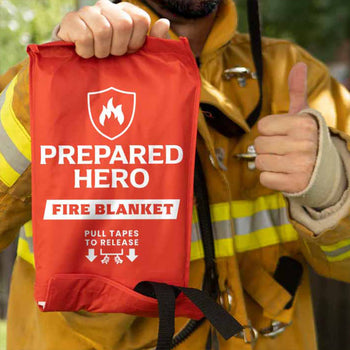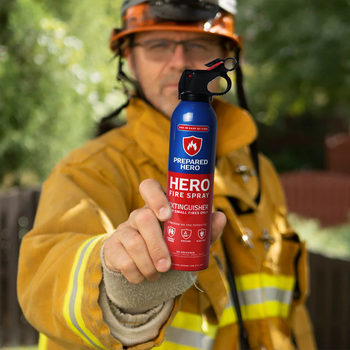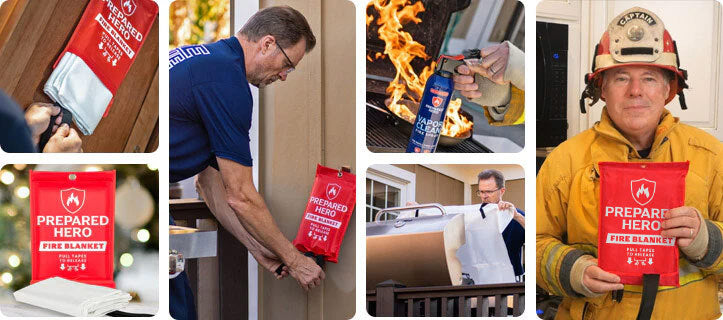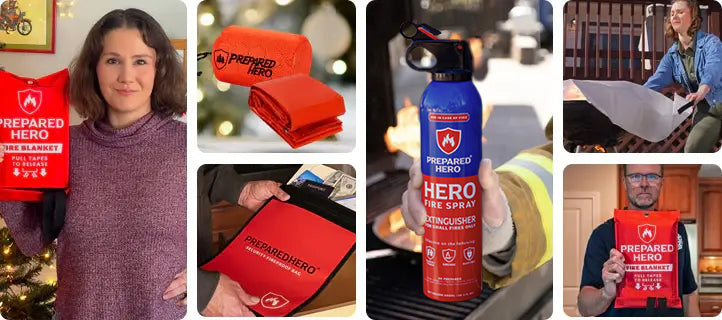Where you put your smoke detectors matters just as much as installing them. Proper placement makes sure they can detect...
Embers might look harmless, but they’re one of the biggest fire hazards out there. These glowing leftovers from a fire can stay hot for hours and travel far, especially when it’s windy. Whether it’s a wildfire or a fire pit, embers can spark new flames without warning. This guide breaks down what embers are, how they behave, and why it’s so important to take them seriously.
What Are Embers?

Embers are the glowing bits you see after a fire dies down. They’re not full flames anymore, but they’re still hot and risky. Embers form when wood or other materials don’t burn all the way. They keep smoldering and hold heat for a long time, even after you think the fire is out.
Embers can be tiny or big. In wildfires, embers are often bits of burning trees or plants. In cities, they can be pieces of houses or anything flammable. Once they float into the air, they’re often called firebrands. That’s when they become a real problem; wind can carry them far and start new structure fires.
Even though embers seem harmless, they can still ignite things around them. That’s why campers pour water on their fires or bury them in dirt. If not handled right, embers can restart a fire hours later. On the flip side, people also use embers for cooking, like in charcoal grills, because they give off steady heat. They’re also great for slow cooking and don’t flare up like flames.
In short, embers are leftover pieces of fire that stay hot and active. Whether you're camping or dealing with wildfire risks, it's smart to take them seriously. You should also have fire blankets, fire sprays, and flame shields in case things get bad.
Are Embers Dangerous?
Yes, embers are dangerous. In fact, they’re one of the main reasons homes catch fire during wildfires. These small, glowing bits of burning material can float through the air and land on rooftops, dry leaves, or even get inside vents. Once they land, they can start a wildfire.
Plus, they don’t need flames to be a threat. In fact, research from the Witch Creek Fire in San Diego County found that two out of every three homes destroyed were not burned by direct flames. Instead, they were ignited by wind-blown embers. That shows just how risky embers are.
The process is called fire-spotting, where embers travel ahead of the main fire and create new fires in dry areas. They can travel long distances, especially with strong winds. That’s why it’s so important to clear leaves, pine needles, and debris from your yard and gutters.
Even after a fire seems out, embers can stay hot in ash or debris. So, always use water to fully put out campfires and stir everything to make sure it’s cold. Whether you’re camping or live in a wildfire zone, don’t underestimate embers. They may be small, but they’re one of the biggest fire hazards out there.
Can Embers Cause Fires?

Yes, embers can start fires, including from everyday things like grills, fire pits, and fireplaces. They don’t need flames to cause damage. Once hot, they can stay dangerous for hours.
There are four main ways embers can lead to a fire:
- Landing directly on the structure
- Entering the house through vents, windows, or cracks
- Landing in the yard or landscape around your home
- Hitting nearby fuels like sheds, fences, or woodpiles
All of these areas need regular cleanup and attention. It doesn’t take much. A single ember can sneak into a vent or gap and land on carpet or curtains. That’s enough to start a structure fire. They can also slip between deck boards or land on dry leaves in gutters and smolder until flames break out.
Most fires from embers actually start this way—not directly on the home, but by lighting up furniture, mats, firewood stacks, or dry debris near the structure. This is called secondary ignition, and it’s often what causes serious property damage.
Even small backyard fires can throw embers far. If there’s wind, they can travel hundreds of feet while staying hot enough to spark something else.
That’s why it’s important to clean out your gutters, trim dry plants, and move flammable stuff like firewood away from the house. Plus, keep fences, sheds, attached garages, and landscaping maintained so embers don’t have a landing spot.
Remember, embers might be tiny, but they’re sneaky. They can land silently, smolder unnoticed, and turn into a full fire when no one’s around. So, always soak leftover ash with water, stir it up, and make sure everything is cold before walking away.
Can Embers Cause Wildfires?
Yes, embers can cause wildfires. In fact, they’re one of the biggest reasons wildfires get out of control and destroy homes. It’s not always a wall of flames that takes out a house. In fact, up to 90% of homes and businesses lost in wildfires are first hit by embers.
Embers are small, burning bits of material, like leaves or wood, that get picked up by the wind. They can fly far ahead of the main fire, sometimes several miles. Plus, they can sneak into tiny spaces, land in dry leaves, or settle on your roof and smolder until something catches fire.
For instance, 74 homes were destroyed in the 2007 Witch and Guejito fires in San Diego. Ember ignition was behind 55 of those losses. That means the houses didn’t catch fire from flames. They were either hit directly by embers or burned after nearby plants or debris were ignited instead.
It’s not just rural cabins in the woods that are at risk. Embers can travel across highways and into neighborhoods. In 2017, embers in Northern California crossed a six-lane highway, lit up some businesses, and then jumped from house to house in the Coffey Park neighborhood. Before that, experts didn’t think embers could travel that far. Turns out, they can.
Wind plays a big role. It carries embers and helps them burn hotter and longer. Once embers land somewhere flammable, like a wood fence, pile of mulch, or bush, they can cause spot fires that spread fast. Even one ember can sit quietly for a bit, then burst into flames if the wind picks up. What’s worse is that once a house catches fire, it sends off more embers, which can hit other homes nearby. That’s how whole neighborhoods get wiped out.
The good news? Researchers are learning more about ember behavior. They’re testing how landscaping and building materials can slow fire spread. But the main takeaway is this: don’t ignore embers.
Is an Ember a Spark?

An ember is not exactly a spark. While both come from fire, a spark and an ember are pretty different. A spark is quick and flashy. It’s the tiny burst you see when metal scrapes metal or something pops out of a fire. It lights up fast and fades just as fast. It’s short-lived and usually doesn’t cause much damage unless it lands on something really flammable.
On the other hand, an ember sticks around. It’s the hot, glowing chunk you see after the flames die down. They’re usually made of wood or coal and stay hot for a long time. That’s why they’re dangerous during wildfires. With the right wind, they can fly far, land in dry spots, and start a new fire, even when the flames seem gone.
Here’s an easy way to picture it: a spark is like a match striking and flaring up for a second. An ember is like a burning coal that won’t quit.
Sparks might start a fire. Embers keep it going and can spread it. That’s why wildfire experts focus more on embers when it comes to home safety. They're small, sneaky, and a major reason fires get out of control.
What Is Hotter, Flames, or Embers?
You’d think flames are always hotter, right? Not exactly. Flames might look intense, but embers can actually burn hotter and more evenly. That’s why people who cook over a fire usually wait for the flames to die down and the glowing coals to take over.
Flames are flashy. They burn fast and can get very hot, especially the blue or white ones. However, they’re not always consistent. The heat jumps around, which makes cooking tricky. On the other hand, embers are steady. Once the fire dies down, those glowing chunks of wood or coal keep pumping out serious heat, sometimes hotter than the flames that created them. They also hold that heat longer, which is perfect for grilling, roasting, or slow-cooking. Learn more about how hot fire is here.
What Is the Color of an Ember?

Embers usually glow red, orange, or deep yellow. It mainly depends on how hot they are. Right after the flames die down, the embers shine bright orange or even white-hot if they’re really hot. As they cool, they shift to a dimmer red and eventually turn gray or black when they’re about to burn out.
The color basically tells you the temperature. Bright orange or white means they’re extremely hot, red means they’re hot but cooling down, and gray or black means they’re mostly burned out.
So when you see glowing embers under your fire, those colorful bits are what’s left of the wood or coal, still putting out a ton of heat. They may look calm, but they’re still powerful enough to cause a huge fire.
Conclusion
Embers might seem harmless, but they’re a big threat to fire safety. They stay hot, travel far, and can start fires even after the flames are gone. Whether you're camping or live in a wildfire area, don’t ignore them. Clean up around your home, put out fires properly, and always treat embers like a real threat.
Do you want reliable, easy-to-use, and affordable tools to prevent embers from starting fires? Check out Prepared Hero’s fire prevention tools here, and get up to 51% off on certain items. Stay prepared, hero!


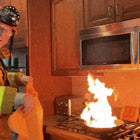 Fire
Fire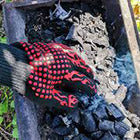 Safety
Safety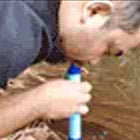 Survival
Survival Protection
Protection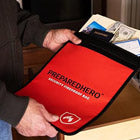 New
New Scouting America
Scouting America
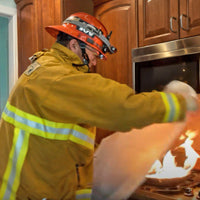 Fire
Fire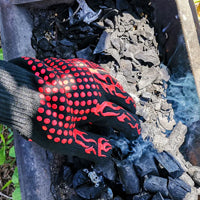 Safety
Safety Survival
Survival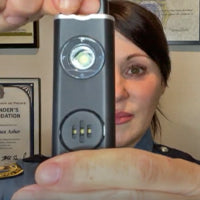 Protection
Protection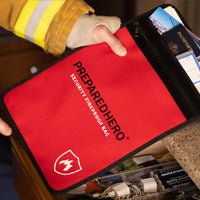 New
New
